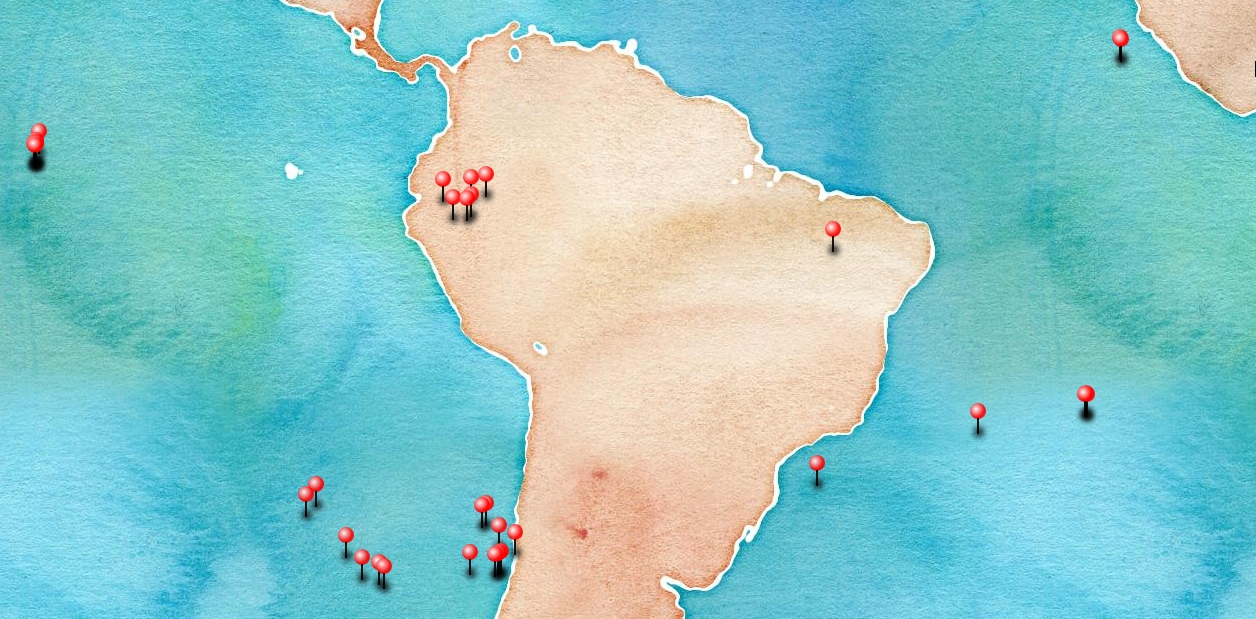News Archive
-
Jan 18 2020
The Stratospheric Report #06 - January 2020
Hello and welcome to a new issue of "The Stratospheric Report" (TSR in short).
On this edition we discuss latest developments in NASA's balloon campaign in Antarctica including the ill fated flight of the BLAST telescope; the sunk in the Atlantic of World View's Gryphon 16 stratollite mission; first round the world traverse of Strateole 2 balloons; latest flights by Raven Aerostar plus a review of what we know so far about Thunderhead balloon systems and finaly the usual update on Project Loon including latest launches, landings and actual whereabouts of the balloon fleet.
Enjoy the reading... please spread the word of the existence of this report among potential readers and don't forget to Subscribe to receive a heads-up when the new issue is online.
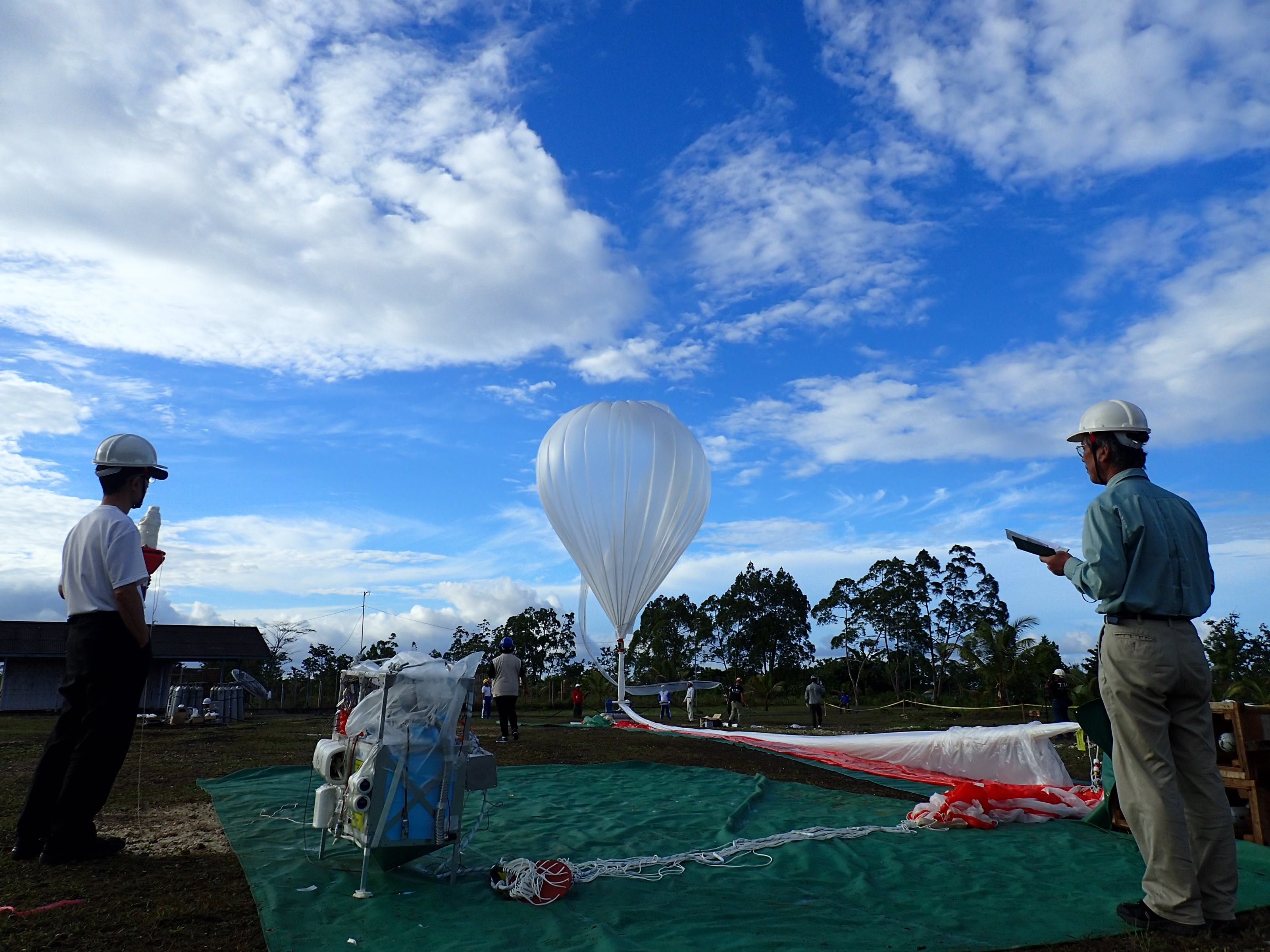
The picture that ilustrates this edition of TSR was taken in February 2015, during a stratospheric air sampling campaign conducted on Biak Island, Indonesia, thanks to a collaboration between several Japanese Universities, JAXA, the National Institute of Polar Research and Indonesian Aeronautics and Space Administration (LAPAN)
-
NASA campaign in Antarctica (III)
Not so good news for BLAST-TNG
After six unsuccessful launch attempts, BLAST-TNG the second big experiment in the launch line of NASA's balloon campaign in Antarctica was finally put airborne a couple of minutes after 5:00 utc on January 6th, thus becoming the first balloon launched in the world in 2020.

View of the short flight path of BLAST TNG (mission 708N). It represents about 15 hours of flight.
For the exultant scientific team of the project, the joy would endure merely a few hours: according to a brief communication spread on January 9 on social media about 9 hours into the flight a "sudden event" prevented them to operate the pointing system of the instrument. A few hours later, the flight was terminated before the balloon moved further away. This was made to allow an easier recovery of the instrument. At right can be seen a map showing the balloon path.
BLAST-TNG is the acronym of Balloon-borne Large Aperture Sub-millimeter Telescope - The Next Generation. It's a new telescope designed to observe the polarized thermal emission from interstellar dust. The goal is to provide new insight into the properties of dust and the role of magnetic fields in the interstellar medium through a wide range of densities. It continues the legacy of BLASTPol, another instrument flown on a long-duration stratospheric balloon flight in Antarctica in 2012 and BLAST, also flown several since 2003.
This was meant to be the maiden flight of the instrument.
The BLAST project in all its incarnations has been very successful in terms of the scientific data obtained, but has also had all kinds of inconveniences throughout its existence, something that is expected when new technology is developed and you want to push the limits of knowledge. That include for example being dragged for days and hundred of miles across the Antarctic plateau after a succesful flight and landing or what occured in July 2017 when a small explosion in the cryostat (the device that cools the detectors and optics enough to capture the faint radiation from the stellar background) forced to quit from the campaign. In both cases they managed to recover from the disaster and were able to follow on. No doubt that after the recovery of their instrument and a deep analysis of what failed, we will soon have BLAST flying high again.
Nothing new about the incident has been published since the landing so stay tuned in the next edition of this report for more information on the recovery of the payload from the ice. However, it is good to note that there is a chance -as occured before in other incidents- that NASA will impose an embargo on information until the investigation of what happened is completed.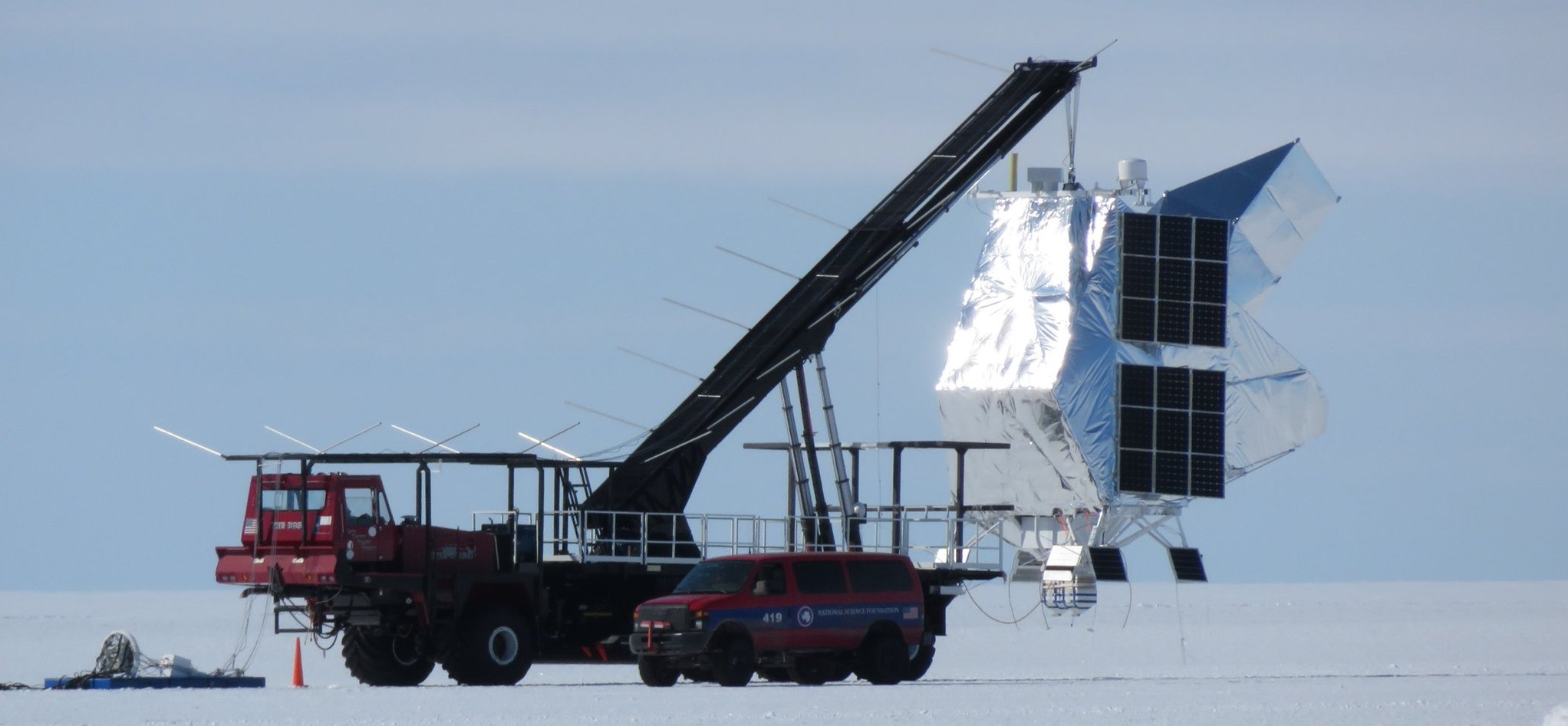

Complete path of the SUPER TIGER Flight 706N. In blue can be seen the first revolution, the second in Green and the last one portion of flight in Red.
Back to the other participants of the antarctic campaign the Super-TIGER experiment which was launched on December 15 is progressing very well. So far it has been 31 days aloft and at the moment of writing this is about to complete two full circles around the pole.
According to an article recently published about the mission, the team will not to try to break the standing record of 55 days: "...(due to) the way the stratospheric winds are circulating this season, our flight will be terminated when the balloon comes over a suitable location at the end of our second revolution around the continent...".BREAKING NEWS a few hours before publishing this the flight of Super-TIGER ended. Balloon was separated from the payload at 00:15 utc on January 17 and landed one hour later 800 km from McMurdo Station in the Antarctic Plateau at coordinates 71°7.53 S - 158°35.10 E. Total flight time was 32 days and 23 hours.
Althought the headlines of the campaign were steal by the two "big" instruments, a third balloon was also launched this season, using not a zero pressure balloon but a superpressure one.
I'm refering to the TRAVALB mission which stands for Trajectory Validation and the final "B" for BARREL. The main goal of the flight is to test NASA's trajectory predictions in Antarctica and also see how long and where the balloon goes.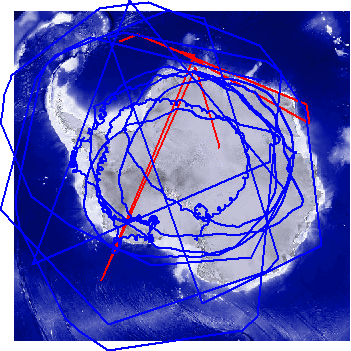
Real time location of the TRAVALB-2 Flight 707N from the onboard GPS system.

Launch of TRAVALB-2 super-pressure balloon on Dec.29 (Image: Garrison Breeding via Ross Hays)
As part of the mission NASA invited BARREL to take part of the flights with a scientific load. The acronym stands for Balloon Array for RBSP Relativistic Electron Losses and is a multiple-balloon research program designed to study electron losses from Earth's Radiation Belts. The inititative is a NASA mission carried out at Dartmouth College that works in coordination with the Van Allen Probes mission (formerly known as the Radiation Belt Storm Probes mission). For this flight -the 58th in BARREL's history- the scientific payload used was the same from previous flights but with the addition of extra batteries, two lower solar panels and heaters in order to survive the longer nights expected for an ultra-long duration flight.
Original plans contemplated two TRAVALB launches, one flown "earlier" in the season and the other "late". However, after several attempts and a failure during the launch of the first flight -which was finally aborted- only one mission was performed.
The balloon was hand launched on December 29, 2019 as mission 707N and so far performed a little more than a half circle around the pole in 19 days.
-
World View launch/landing activity
GRYPHON 16 A journey to the bottom of the sea?
After all the media attention gained by the first live transmission of a Stratollite balloon system performed by World View, last december, the mission dubbed as GRYPHON-16 seems to have sunk into oblivion. Literally.
As you may remember from the last edition of TSR, the Tucson-based balloon firm performed the launch of one of their long duration balloons on December 16th which swiftly moved across Mexico and the United States. Just over a week later the craft was wandering east of the Lesser Antilles in the Caribbean, circling endlessly. The map below shows the flight path and last position of the balloon as of December 28th, 2019.
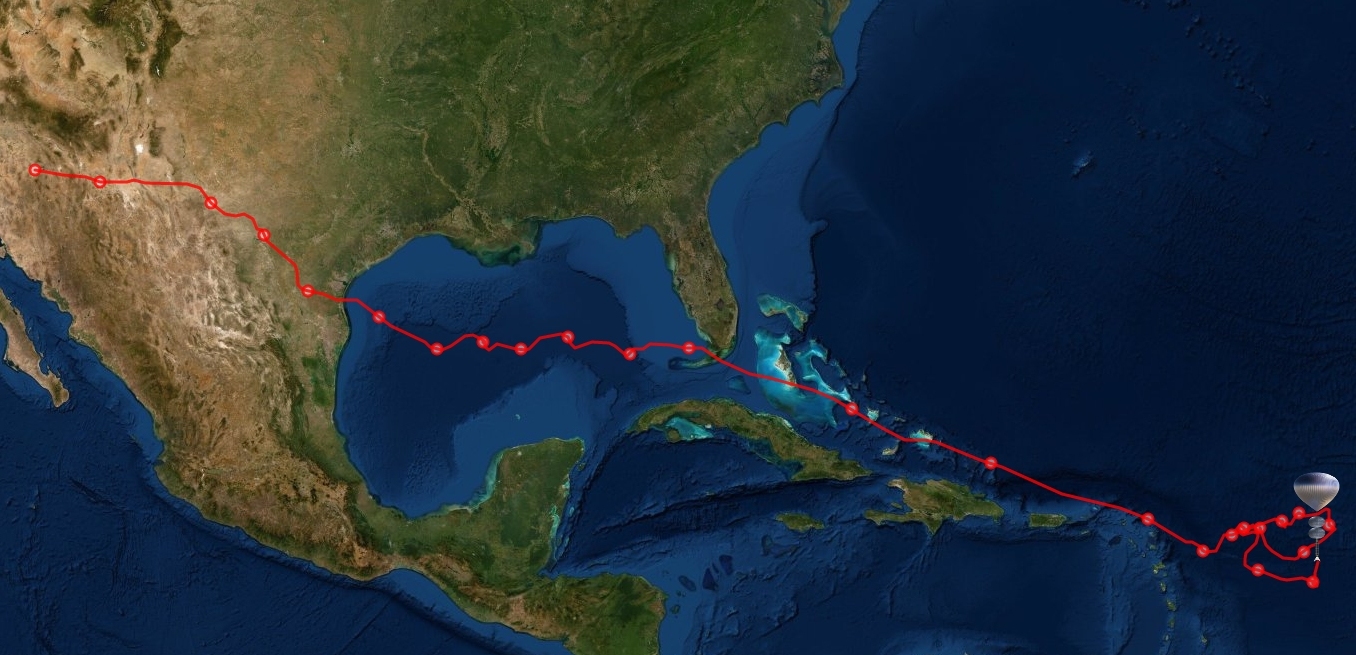
As allways do, I was following from time to time the mission through the ADS-B tracking network and also using a special page introduced by World View shortly after the launch event of GRYPHON-16. On December 31th, all of the sudden, the tracking page was gone and replaced by the World View logo and the legend "the flight tracker is currently unavailable".
We are in the process of landing the #Stratollite and for the vehicle's protection we have to turn off tracking. Thanks for keeping up with GF-16 and stay tuned for updates on flights in the new year! #2020 #WorldView
— World View (@WorldViewSpace) December 31, 2019After commenting this on my twitter account (@stratoballoon Do you follow me?. No?! Shame on you!) I've received a public response of the company as can be seen at left.
It took me by surprise, and started to figure out what could be happened. It was obvious that taking account of the lack of more explanation and considering the sudden announcement of the landing, something did not go as expected. Another balloon leak? A malfunction of onboard systems?.
Whit almost one tonn of equipment floating above the Atlantic Ocean, the meaning of the term "landing process" was nothing more than admiting that they were trying to reach land -whatever- for both the balloon and its cargo. In that context, the deactivation of the tracking page was a wise measure to avoid the fall into strange hands of an expensive payload with propietary technology.
With no intention of disclosing any finding about the landing, but moved by the curiosity and a sense of professional challenge I've started a frantic search for any clue of the probable final destination of GRYPHON-16. It would be some country in South America? Would they try to land the balloon on one of the Caribbean islands or they would try to reach Africa?. I've checked daily several forums and social media for sightings of the strange looking balloons while at the same time monitored the publication of aerial and maritime warnings in search for any clue of a rare event which could be associated to the landing of the balloon.
The search would pay off on January 2, when I've finally found notice of the landing... Or rather the sinking. Hydrolant 19-20, a maritime bulletin issued that day showed a warning of hazardous operations related to "space debris" in the north Atlantic valid between 14:30 and 17:30 utc in a radius within 25 miles of coordinates 24-58.8N 025-01.2W. The notice made no mention of any balloon but Bingo ! it had been issued by World View Enterprises. Below these lines there is a map showing the aforementioned area and message.
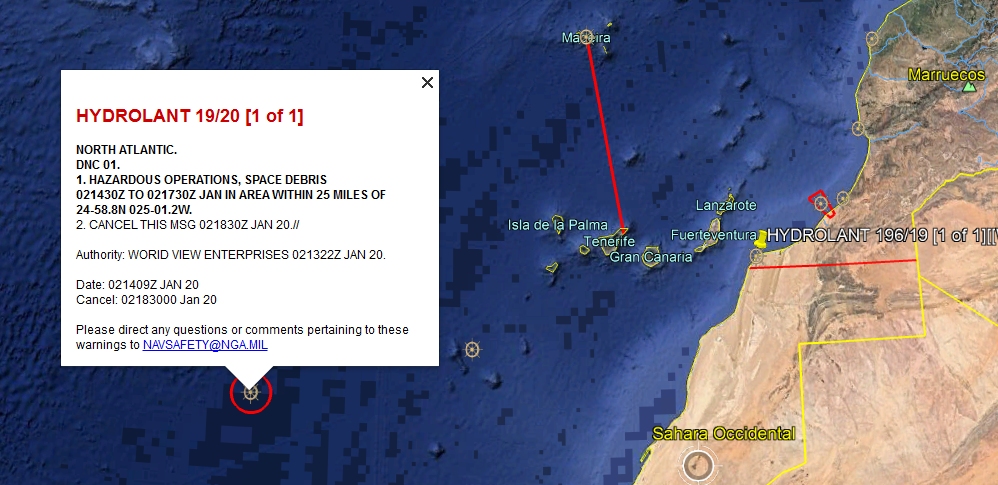
Taking account of the location, is probable that they tried to move the balloon towards Africa but obviously didn't make it and decided to sink it. A similar procedure was followed a few years ago by NASA with its Super Pressure Balloon after it developed a leak when it was in the southern Pacific Ocean far from any landmass. The agency decided to sink the balloon and payload to the bottom of the sea so the flight was terminated but the balloon was not separated from the payload, and fell to the ocean surface still attached to it. Using this technique, the payload acted like a counterweight or anchor that dragged the balloon fabric to the bottom of the sea with it. By doing this, NASA avoided the chance of the balloon remaining on the ocean surface being a risk for navigation or for most marine life.
Back to World View's mission, total flight time for GRYPHON-16 was exactly 17 days.
-
Strateole 2 campaign in Seychelles (V)
The eight balloons launched during November and December as part of the Strateole 2 campaign carried out by CNES and several other institutions in Seychelles Islands, continue without problems developing their tropical journey. On January 15 an important milestone was reached when three of them crossed the 55º parallel thus completing the first circle around the world.

The fastest world circumnavigation was completed in 40 days by a balloon launched on December 5, while the longest has been achieved after a journey of 58 days by another balloon which was launched on November 18th.
The longest float time so far has been 66 days for ST2_C0_02_STR2 the opening flight launched on November 11th, but it's trajectory acquired a retrograde orientation after being stuck for days making circles in central Pacific and surely will not make a full circle at all.
Aside the balloons that returned to the Indic Ocean, the rest of the fleet is distributed above southamerica (three balloons) and above micronesia as can be seen in the real time tracking page available at https://webstr2.lmd.polytechnique.fr. Futhermore details of the Strateole 2 campaign can be found also in Strateole 2 website.
-
Raven Aerostar activity
Latest launches by Raven Aerostar
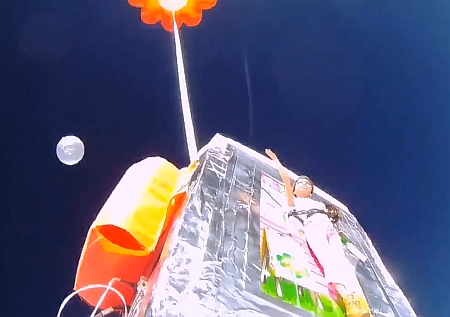
A Barbie attached to the balloon gondola plunging to earth from the stratosphere. Far behind is the balloon (Image: Raven Aerostar)
Since the baginning of the year, only two balloons were launched by Raven Aerostar the decane balloon firm based in South Dakota.
First mission with callsign HBAL0371 was launched from Raven's Innovation Campus near Baltic on January 7th, 2020 at 14:55 utc. The flight was part of a STEM activity with a group of Girl Scouts from South Dakota on which the girls attached a Barbie doll to one side of the payload (image at right).
The balloon ascended up to 55.000 ft and moved towards southeast. After 4 hours and 50 minutes of flight, the mission was terminated and the small payload descended not far from Buck Creek, Iowa.
The second mission was a Thunderhead launch and was performed from the same undisclosed place located in a rural area of Santa Fe County in New Mexico that was used several times in late 2019. The flight with callsign HBAL0372 was launched at 14:00 utc on January 11, 2020. After ascending to 75.000 ft, the balloon remained floating in the north part of the state and then moved to southern Colorado. Later it was displaced towards east above Kansas and Missouri where it landed on January 15, 2020 at 22:00 utc near the small town of Blodgett. Total flight time for the mission was 104 hours.
Anatomy of a Thunderhead balloon system
I think the slow pace of launches this month, give me more room for some in-deep analysis on the nature of these particular balloons.
What we know about Thunderhead's...? Not much really.
Since the moment they started to appear on the screens of flight-tracking sites, I've tried to obtain as much information as possible about the new long duration balloon system developed by Raven Aerostar. My attempts on the matter always ended against the wall of preformated press releases, courtesy responses and other ways that the big companies uses to talk about what they don't want to talk about. However, after collecting data from a number of sources like technical articles, presentations in specialized symposia and some other materials I've elaborated a brief description of these vehicles. I hope you find it useful.The Thunderhead Balloon System is a steerable multipurpose platform developed by Raven Aerostar for stratospheric missions of long duration, with navigational capabilities and the ability of performing persistent flight over areas of interest. The balloons can be flown individually or in constellations to support a wide range of requeriments including intelligence, surveillance, and reconnaissance; serve as an alternative to satellite communications or make surveys of ground, marine and environmental objectives.
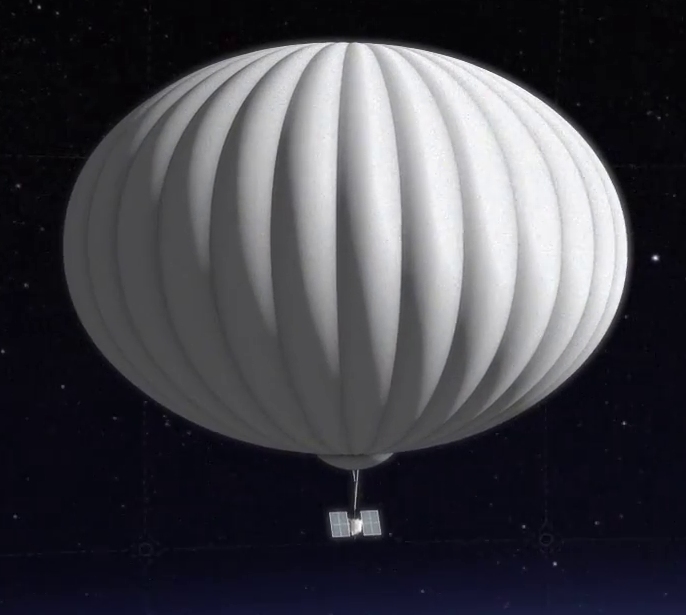
The heart of the system is a superpressure balloon to which is attached a gondola containing the payload, flight systems and solar panels.
The balloon is a pumpking-shaped superpressure model made of polyethylene apparently in two configurations: Thunderhead 200 SPB with a volume of 64.000 cubic feet and Thunderhead 400 SPB with a volume of 400.000 cubic feet. The first ones can flight at a maximum altitude of between 50 and 65 kft while the second ones can float between 75 and 92 kft well above commercial jetliners and weather phenomena. Both models can carry a payload of up to 125 pounds. To inflate the main balloon is used helium and once it reach float altitude it expands and pressurises acquiring the final pumpkin shape. Inside the main balloon there is a smaller one called "ballonet" which serves as ballast and is the heart of the Thunderhead steering system: air is introduced into it using a special built pump permitting the balloon to modify its weight for ascent or descent. Although is not possible to directly control course or speed, these altitude changes allows the balloon to take advantage of different wind patterns at different altitudes for navigation. The balloon is also equiped with a valve at the top which is used to vent helium. Flight time of the system ranges from several hours to more than 30 days.
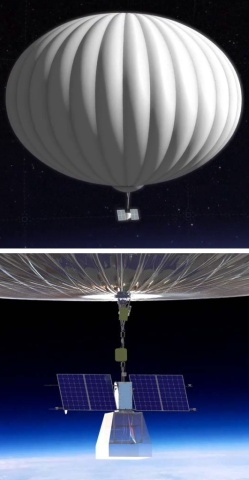
The instrumented gondola is attached directly below the balloon. Is composed of lightweight materials, may vary in size and can be rectangular shaped or truncated pyramid shaped. The upper part of the gondola houses in an insulated compartment the avionics and the elements that are part of the command and control system: ADS-B Out transponder for localization by nearby planes and Air Traffic controllers; RF-based systems for LOS (Line Of Sight) communications; Iridium-based system for BLOS (Beyond Line Of Sight) communications; GPS aided inertial navigation systems for real time positioning and Iridium backhaul as datalink for control and command of the payload. On the sides of this compartment are mounted the solar panels which varies in size according to power requeriments. They provide energy to the whole system during the day while charging onboard batteries for nighttime operations. Protruding ends of the booms on which are mounted the panels also serve to mount GPS and Iridium antennas. In some cases an additional payload compartment is located directly below the instrumented gondola with size and shape specially adapted for the mission requirements. If necessary, insulating panels can be added on the sides to protect onboard equipment and help to counteract the extremes temperatures of the stratosphere. A packed parachute is attached between the bottom of the balloon and the top of the gondola to allow a safe descent of the equipment at mission's end. Also crush pads are fixed to the bottom of the gondola to absorb the shock of the landing.
The launch requeriments for Thunderhead systems are minimal, so they can be launched by hand or using specially developed mobile platforms from almost any location, including small airfields, open terrain or even at sea from small vessels.
Note: dear sirs of Raven Aerostar, if I'm wrong on what I've published above, please correct me!. I will be more than happy to get a more accurate and complete picture of such a fantastic flying system.
-
Project Loon launches and landings and current status of the balloon fleet
New record by Project Loon. (Yep, again)
In last edition of TSR I've informed about the new record set by HBAL648 a balloon of the project which on late December completed 231 days aloft, beating the previous record set in June 2019. Well....forget it: during the first week of the year that mark was surpassed by HBAL703 which exceeded that flight time, and by the moment of the publications of this report has been 245 days in flight and counting.
Probably, the abscence of an official announcement by the company of the new endurance mark set by HBAL648 was due to the fact that they know that record won't last. Now we just have to wait to see how much longer HBAL703 will remain in flight.
Latest balloon launches performed by Project Loon
The launch activity of Project Loon during the period of time covered by this report has been scarce, with four launches from Puerto Rico and one short mission from Winnemucca, Nevada.
On January 6th, 2020, HBAL110 was the first balloon launched by the project from it's base in Ceiba, Puerto Rico and marked the return to activity of the facility which had performed the last operative mission on December 5th, 2019. The balloon released at 22:36 utc ascnded as expected to near 60.000 ft but an hour and so into the flight the balloon started a sharp descent and impacted at 00:38 utc on January 7 in the sea 2 miles SE of Palmas del Mar, Puerto Rico. The descent curve suggest that the balloon probably burst.
The next two balloons were launched in rapid sucession also from Ceiba on January 7th: HBAL090 at 3:11 utc and HBAL093 at 4:18 utc. While six days after, on January 13th, was put in operation HBAL114 which had a very unusual launch time at dawn: 10:27 utc.
The only launch from Winnemucca Nevada for this edition occured on January 15th at 15:30 utc. The balloon with the callsign HBAL112 flew for 1 hour and 38 minutes before landing in a small hill 15 km SSE of Tuscarora in Nevada.
Latest landings performed by Project Loon
#HBAL101 a #ProjectLoon launched from Puerto Rico on Dec. 5 landed this morning near Alegrete, Brazil after 36 days aloft.
— StratoCat (@stratoballoon) January 11, 2020
Images taken by Uelisson Fernandes https://t.co/SEmiamGPuZ pic.twitter.com/xI97I2xxC5Since the last issue of TSR, four balloons were terminated, one in the United States, one in Brazil and two in Peru.
The first balloon landed in the United States on January 2th, 2020 in a spot located 13 km SW of Llano, Texas. The craft was launched from Winnemucca, Nevada on September 11th, 2019 and remained in flight 113 days.
The second balloon with the call sign HBAL101 was terminated over the southern part of Brazil on January 10th, 2020. Launched from Puerto Rico on December 5th, it remained in flight 36 days before touching ground in a farm 35 km SW of Alegrete, in Rio Grande do Sul state. This particular landing caused quite a conmotion in the region and was well covered by the local press. Apparently a firm from Uruguay was contacted by Loon to take care of the downed artifact.
Last two landings occured in both extremes of Peru. On January 12, HBAL678 a balloon launched from Puerto Rico on June 27th, landed at 20:04 utc 20 km WSW of Ica after a total flight time of 199 days. The next day, January 13, HBAL035 was landed in the rainforest of the Loreto Department, in a point located 15 km W of Pampa Hermosa. The balloon, launched from Puerto Rico on October 18 remained in flight 87 days.
Current status of Project Loon's balloon fleet
As of January 18th, 2020 at 04:00 utc the total number of balloons in flight is 37. Currently, the youngest balloon aloft is HBAL114 which has been merely 4 days in flight, while the oldest member as mentioned before is HBAL703.
The map below shows the aproximate location of the balloon fleet:
